Taranto is a battle honour of The Parachute Regiment. The battle honour recognises the regiment’s role in the seaborne landings on the eastern coast of Italy, during Operation Slapstick, and the subsequent advance to Foggia in September 1943.
As a result of a shortage of aircraft, the British 1st Airborne Division was transported by sea in six cruisers and a minelayer, HMS Abdiel, by two sorties into Taranto between 9 and 12 September 1943.
German forces withdrew from the port of Taranto shortly before the division’s arrival. However, over 300 men were killed and injured when HMS Abdiel struck a mine in the harbour on the night of 9/10 September. Most of the casualties were from the 6th (Royal Welch) Parachute Battalion. In addition, a significant part of the division’s ammunition reserve and 12 six-pounder anti-tank guns from 2nd Airlanding Anti-Tank Battery, Royal Artillery were lost.
Units of the German 1st Parachute Division, who were in the area, made a fighting withdrawal as elements from 1st Airborne Division, including 156 and 10th Parachute Battalions of 4th Parachute Brigade and 1st Airlanding Reconnaissance Sqn, advanced out of Taranto.
British patrols made contact with weak enemy rearguards south of Massafra, and about twelve miles from Taranto on the Bari road.
On 10 September 156 Para Bn mounted an attack on soldiers from 1st Fallschirmjäger Regiment at Mottola, five or six miles beyond Massafra. They succeeded in driving the German force, about a company strong, out of the town.
Simultaneously, 10th Para Bn moved north westwards through Palagiano on to Castellaneta. During the fight for the town, Major General Hopkinson, the divisional commander, was shot on 11 September while observing the enemy and died of his wounds the following day.
Within 48 hours of landing the Paras had entered Brindisi and Bari.
Later, the Germans also withdrew from Gioia del Colle after the British Paras inserted aggressive fighting patrols into the town and elements of 4th Parachute Brigade took over the nearby airfield on 17 September. This enabled the RAF to establish six squadrons within 48 hours at Gioia del Colle airfield to support the Allied landings at Salerno, which had not gone as expected.
The 4th Parachute Brigade was relieved from its front line advance by the 1st Airlanding Brigade on 19 September. Up to this point the 4th Para Bde suffered around 100 casualties (killed, wounded or missing) during its engagements with the 1st German Parachute Division.
The 1st Parachute Brigade, which had been previously in reserve at Taranto was deployed to Castellaneta and then to Altamura.
From 20 to 24 September much of the 1st Airborne Division was employed in constructing a defence perimeter to supplement fortifications at Taranto because of fears that the Germans might mount a major counter-attack.
A composite force comprising 1st Airlanding Brigade, 1st Airlanding Reconnaissance Squadron and 21st Independent Parachute Company was formed to resume the advance to harass the Germans. 1st Airlanding Brigade occupied Foggia on 22 September.
The role of harrying the German withdrawal was passed to 78 Infantry Division towards the end of September, and the units of 1st Airborne Division were eventually withdrawn back to Taranto.
With the exception of the 2nd Independent Parachute Brigade Group, 1st Airborne Division embarked for the UK a few weeks later in preparation for the subsequent campaigns in NW Europe, where The Parachute Regiment was to earn nine further battle honours including the Normandy Landings and Arnhem.

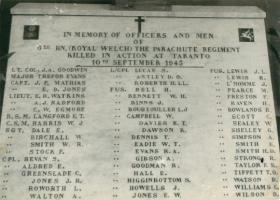
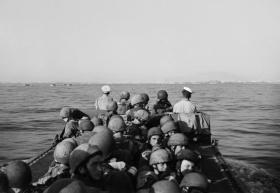
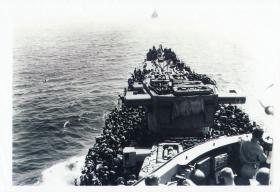
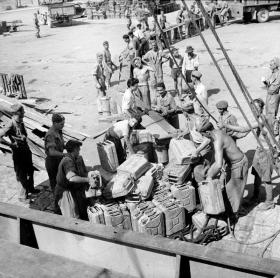
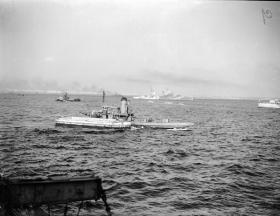
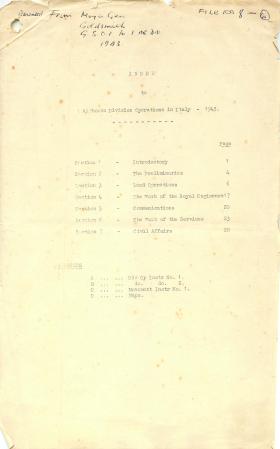
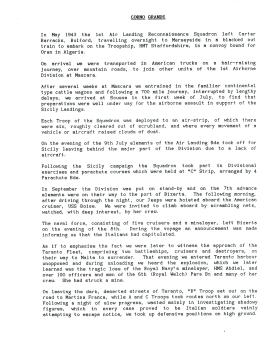
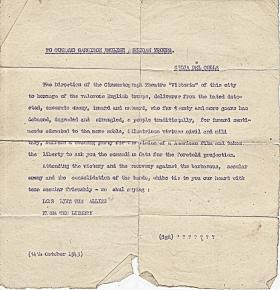




Latest Comments
There are currently no comments for this content.
Add Comment
In order to add comments you must be registered with ParaData.
If you are currently a ParaData member please login.
If you are not currently a ParaData member but wish to get involved please register.